
Many Thai enterprises might use Thailand 4.0 as a launchpad into the digital age as several firms have already begun their digital transformation process. To be on par with other digitalised economies, the current push for next-generation industrial production is essential.
The challenge will be reorienting the nation’s whole economic focus, as well as the attention of its citizens, toward maximising the promise of the digital world. If successful, Thailand will gain many long-lasting benefits.
In addition to the obvious economic benefits of digital adoption, these technologies will also be more environmentally friendly and sustainable.
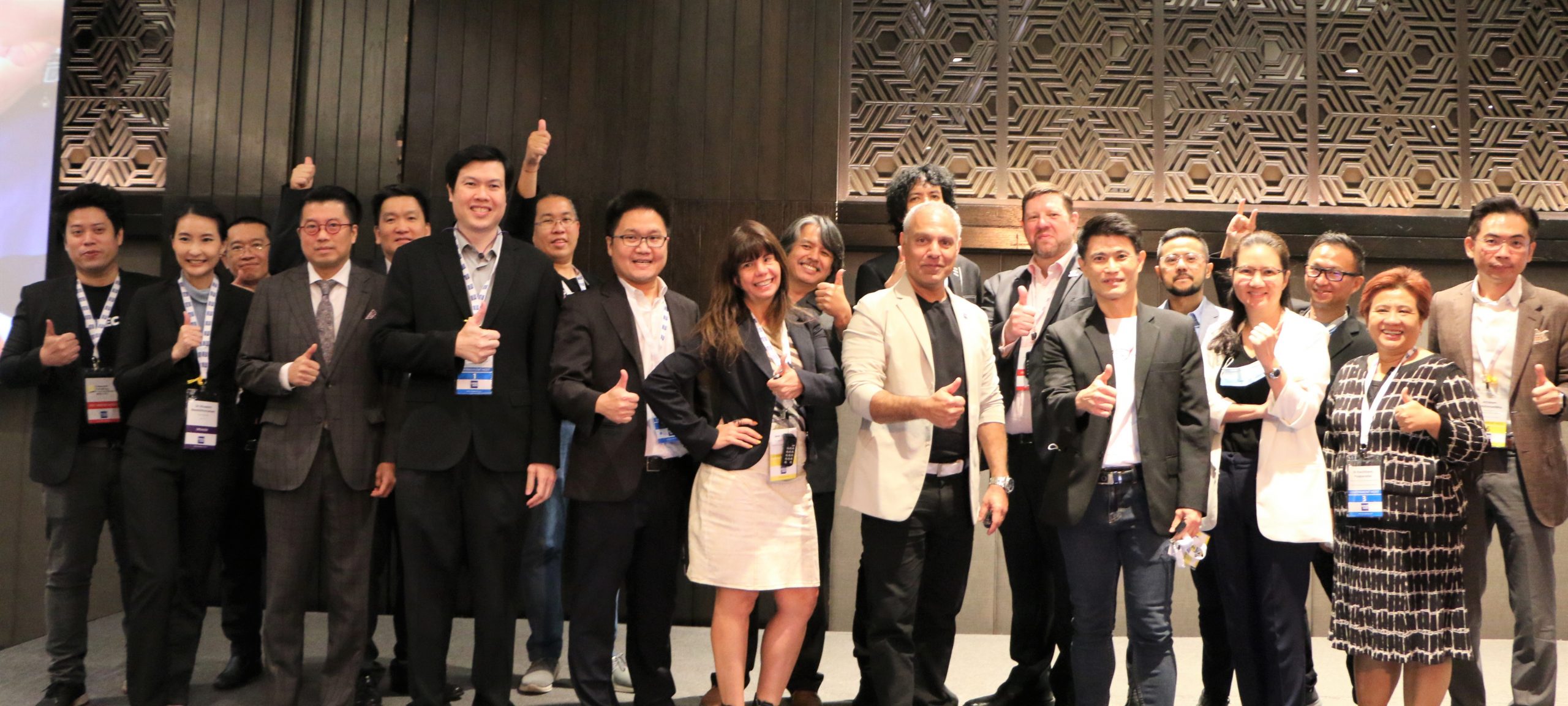
Thailand 4.0 aims to change the current economy, which currently relies mainly on manufacturing foreign-designed items, into one that supports the innovation, research and development required to generate innovative technology from within Thailand.
Digital Thailand and Digital Economy seek to revolutionise Thailand and digitalise infrastructure, manufacturing, government services, enterprises, and several other sectors. Plans for a “smart nation” and “smart city” are propelled by public investments in numerous areas.
The goal of the strategy is to digitally transform Thai government entities to provide the best citizen-centric services with a high level of efficiency and transparency.
In addition, the Thai government believes that its citizens are a crucial factor in the growth of Thailand 4.0. Hence, the economic model’s stated objective is to develop Thais into “more capable human beings” by revamping the education system and altering curricula and teaching methods to build a better learning ecology.
Leading Thai government and FSI organisations gathered at the Thailand OpenGov Leadership Forum on 19 October 2022, at the JW Marriott Hotel Bangkok to discuss, exchange, and learn about digital innovation and transformation strategies. Participants were also engaged in enabling digital innovation and transformation to further develop and provide valuable modern services to the country and its citizens.
Thailand’s Digital Economy: The Progress and Future Expansion

According to Mohit Sagar, CEO & Editor-in-Chief, OpenGov Asia, over the previous decade, Thailand has achieved great progress in its transformation to a digital economy. Several indices of digital infrastructure and accessibility have increased for vast sectors of the population.
“Thailand’s digital economy has made a lot of progress and is in a good place for more growth,” says Mohit. “Thailand was classified as the second most digitally competitive country in East Asia and the Pacific by the European Center for Digital Competitiveness in 2020, but a chronic lack of digital skills stands between the country and its goals.”
The nation has prioritised the digital economy, especially through its industrial transformation policy (Thailand 4.0) and the development of a digital park in the Eastern Economic Corridor (EEC).
The goal of the Thailand 4.0 economic model is to free the country from the constraints imposed by previous economic development models that prioritised agriculture, light industry, and advanced industry.
Additionally, in 2017, the government announced additional investment incentives to encourage investors into tech-related industries, as well as a 20-year National Master Plan for Digital Development (2018–2037).
In the past few years, several laws have been passed to make the digital ecosystem easier, safer, and more secure for both consumers and digital providers.
The virtual world has never been busier than it is right now because of the pandemic. With restrictions and lockdowns in place, an increasing number of individuals have started using their computers and devices to survive and replace numerous in-person activities. With accelerating the digital transformation across the board, these paradigm shifts have influenced economic growth and are poised to remain in – albeit in hybrid models.
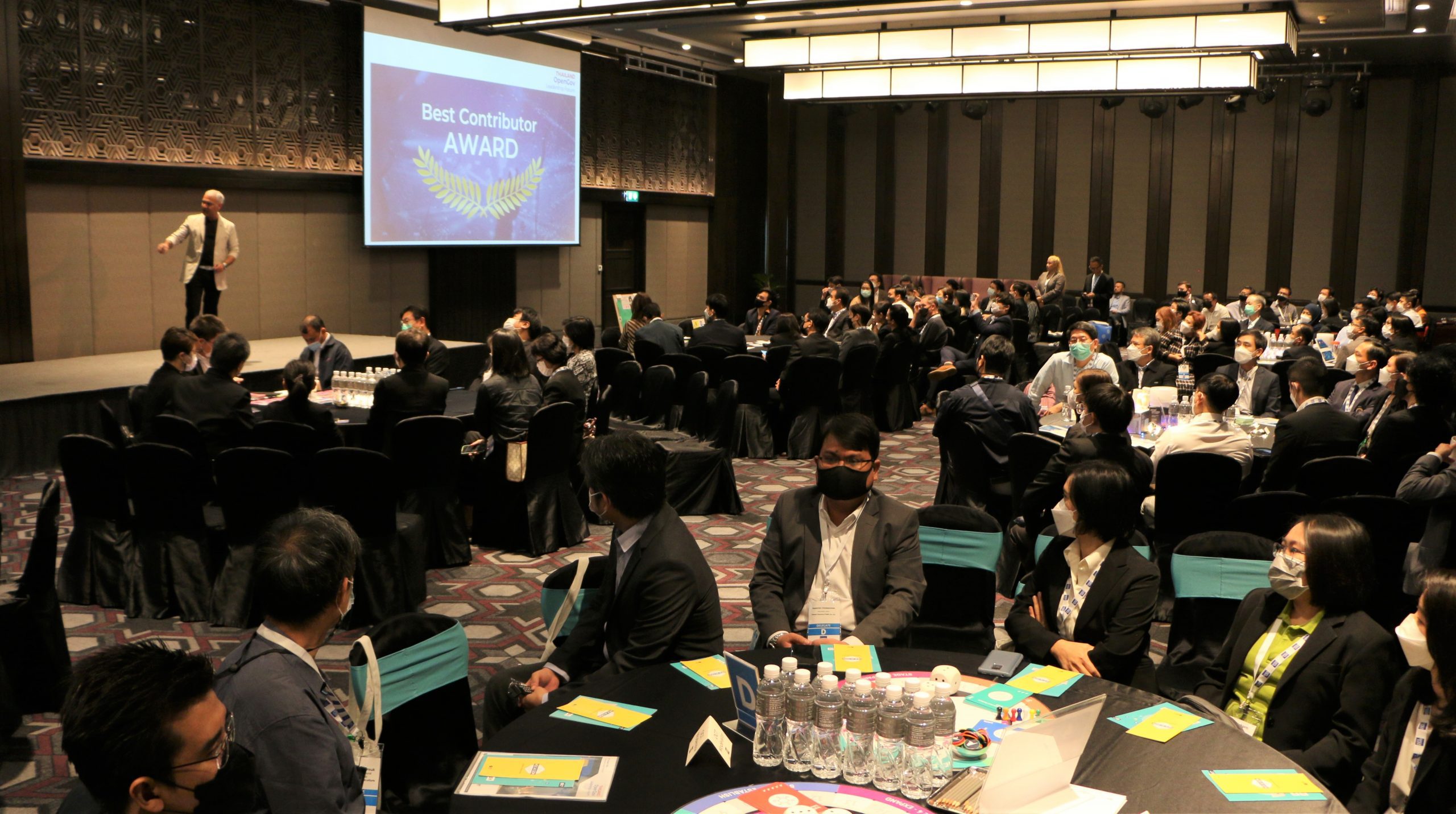
In the agricultural sector, small-scale farmland availability for smallholder farmers to cultivate, an ageing workforce, fewer networks for information access and market distribution channels and a lack of digitalisation of operations, among other factors, are some of the causes of underperformance.
However, even though internet broadband speed can be a little slower in more rural areas, Thailand’s National Statistical Office revealed that a sizable proportion of agricultural households have online connectivity. The Thai government is dedicated to utilising digital technology in important areas, including agriculture, as part of its 20-year National Strategy Plan.
From the standpoint of supply, system-level digital readiness has a significant impact on the accessibility of digital tools, including the availability of digital infrastructure or even the level of development of agriculture data collection, aggregation, analysis, and open access for integrating actors in the value chain. Therefore, it will be vital to comprehend the supply and demand gaps as well as the chances to make digital tools available.
There are excellent opportunities to provide more digital tools for agri-MSMEs. Increased productivity, speedier processing, easier data sharing, lower employee turnover, fewer data input errors, and lower storage and printing costs are all advantages of automation.
Thailand is seeing an increase in agritech solutions. Numerous agritech case studies from other nations can be used as case studies for Thailand in addition to domestically generated solutions.
Drones, robots, artificial intelligence (AI) assistants, etc., are just a few examples of agritech innovations used globally to monitor crop seeding, weeding, and harvesting. Data analysis is also used to understand the precise requirements for crop growth, as well as straightforward mobile applications for distribution and multi-stakeholder integration.
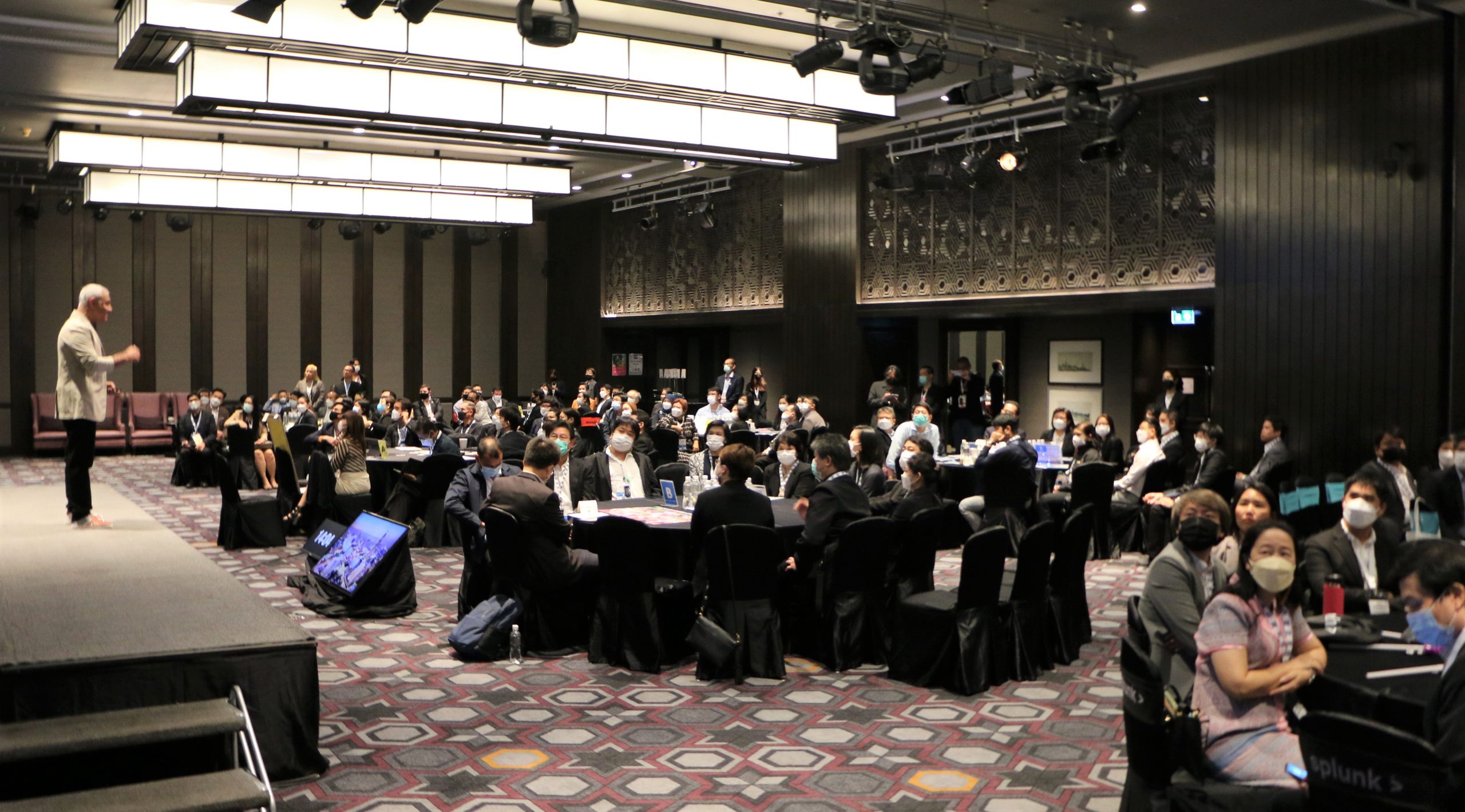
In another sector, Thailand’s Ministry of Transport (MoT) started initiatives to improve safety and efficiency for the 8.5 million vehicles that use Bangkok highways every day on roads intended for two million vehicles.
A quick and simple method of getting around the city is the MRT. Although fewer top sites can be visited by the MRT than by the BTS, it is still possible to completely avoid Bangkok traffic using this mode of transportation.
The government may simplify operations and cut costs by using cloud-based tools. Cloud platforms provide governments with productivity tools that they may utilise to combine administrative and operational procedures and exchange information with numerous stakeholders remotely.
Massive amounts of computational power will be released by 5G. Particularly for cloud computing, its low latency, higher capacity and greater network speeds will be a catalyst for growth. The use of the cloud by businesses will accelerate with the introduction of the next generation of networks.
Governments would consequently be able to better deploy their resources, cut down on operating expenses and fulfil the evolving requirements of residents by implementing data analytics across the organisation. Examples of this identify those who are likely to develop a chronic illness and take preventative measures.
The 20-year Thailand 4.0 strategy, which aims to reduce inequality and foster prosperity, security and sustainability, is in line with these pillars. The efforts of the Thai government, corporate and public sectors have produced 15 smart cities thus far.
Most public sector organisations understand and recognise the relevance of automation in increasing labour efficiency and cutting unnecessary costs, allowing more funds to be invested in improving citizen experience when it comes to public services.
Mohit emphasised that not just firms in the private sector are attempting to adapt to the ever-changing environment to remain competitive. “Governments and public sector agencies are preparing for a technologically advanced, citizen-centric era.”
Keeping Citizens at the Heart of Digital Transformation: A Vision for the Future and a Forward-thinking Approach

According to Dr Supot Tiarawut, President and CEO of the Digital Government Development Agency, a mature digital government is digital by design, data-driven acts as a platform that is open by default, user-driven and proactive.
Findings demonstrate the modest but encouraging progress towards robust digital governments and motivate governments to intensify their efforts to employ digital technology and data strategically for user-driven public services.
Digital government architecture and its aim of “Open and Connected Digital Government with Co-creation for Valuable Public Services “seeks to reduce social welfare disparities, improve competitiveness and governance, and expand public engagement.”
Thailand has its Core Service Processes and digital platforms for its digital transformation. These include: 1) Common Platform – Digital ID & Signature, Service Request and Tracking, e-Form, Service Tracking, e-Payment/wallet, e-Tax, e-Receipt, e-Certificate / e-License and Open Data Platform 2) Exchange Platform – Government Data Exchange: GDX, Linkage Centre, DXC, NSW, among others and 3) Back Office – e-Saraban, e-Meeting, e-Procurement, and ERP Platform.
Their concentration is on education, public health, agriculture, inequalities in social welfare, good governance and promoting SMEs. GovTech Innovation Hub consists of an AI platform, National Open, Source Code, Local Government Digital Transformation, and Personalised Knowledge Platform in terms of digital government innovation.
The open data portal is a component of their one-stop service aid for citizens, businesses, and foreigners, which enhances the client experience.
In addition, Thailand has announced the Thailand Digital Outlook study project for 2022, which will be conducted by the Office of the National Digital Economy and Society Commission (NHSO) in collaboration with ministry agencies including the Electronic Transactions Development Agency (OBEC) and the National Statistical Office (NHSO).
The collected data on Thailand’s economy and society’s digital development indicators and statistics has provided information for evaluating the country’s digital development. NHSO’s Thailand Digital Outlook research programme is in its fourth year of investigating the nation’s digital indicators.
According to the International Framework for Economic Cooperation and Development, most of the nation’s digital indicators had improved across the board. In 2021, when the NHSO collected data on Internet usage in all regions of Thailand, the percentage of Thai households with Internet access rose to 88.0%. It covers the indicators of the framework.
The Digital Economy Outlook and additional research in the context of indicators reflecting the Thai context will offer Thailand data that represents the nation’s clear Digital Outlook and emphasises the country’s capabilities in digital development.
Through data, the nation will comprehend the problems, barriers, and limitations that must be addressed immediately. This will increase the nation’s digital economy to the benefit of the entire nation.
Data-Driven Cities

Data, advanced analytics, and the Artificial Intelligence of Things (AIoT) are empowering cities to better serve their citizens, according to Varidthi Santhidej, Business Development Manager, SAS Thailand.
“Smart communities are those that use information technology to improve the lives of their citizens,” says Varidthi.
Intelligent solutions involve data collection, data communication, and data analysis. Data is the foundation of a smart community. Managing and analysing data lets the organisation use the information that different departments collect without being overwhelmed by the amount and speed of the information.
Sharing some of the results of having smart cities, Varidthi noted for transportation, its successful results include reducing cost, travel times, fuel consumption and Reducing pollution as well.
For the management of the investigations, it could result in a decrease in time to solve crimes, improve cross-jurisdiction investigations and help agencies to be proactive.
Smart cities enable the nation to increase the production of energy, prevent and predict critical events and improve the accuracy of appraisals on tax and finance. Likewise, it could also reduce fraud and abuse and improve citizens’ services.
Varidthi cited Jakarta Smart City (JSC) as an example – a Regional Public Service Agency under the Communication, Informatics and Statistics division of the Government of Jakarta Province.
The goal of JSC is to transform Jakarta into a smart city by creating a Smart City ecosystem. The Smart City concept is measured by seven indicators, including Smart Governance, Smart Mobility, Smart Environment, Smart Economy, Smart People, Smart Living, and Smart Branding.
In addition, Thailand is accelerating digitalisation in numerous industries, based on Thailand 4.0, which began in 2017. This additional contribution from Thailand’s Digital Economy Promotion Agency (DEPA) defines smart cities and Thailand’s plans to achieve them.
The country is trying to establish 100 smart cities by 2022 under its Thailand 4.0 model, a target that is well on its way to accomplishment, especially now that the Digital Economy Promotion Agency (DEPA) and the City Possible worldwide network have signed an agreement.
Twenty-seven Thai smart communities have been inducted into the City Possible programme, which was pioneered by an American multinational financial services organisation and is aimed to make technology work for people by aligning key players to address urban concerns.
The emphasis on smart cities is a key component of the government’s Thailand 4.0 project, which intends to transform Thailand into a high-income nation with dramatically improved urban quality of life.
Driving Real-Time Smart Government with Data in Motion

Data in motion, also known as data in transit or data in flight, is a process through which digital information is transferred between locations within or between computer systems, explains Rully Moulany, Regional Sales Director, Southeast Asia, Confluent. The phrase can also refer to data in a computer’s RAM that is ready to be read, accessed, updated, or processed.
The concept of data in motion is critical for commercial data protection and compliance with regulatory rules. It is particularly significant for people working in big data analytics since data processing can assist an organisation in analysing and gaining insight into trends as they occur.
According to Rully, data-driven firms deal with two categories of data. These are a) Streaming Data, which is ingested at high frequency from live data sources and represents what is happening now, tagged as data in motion and typically used in events and b) Static Data, which provides rich business context but lags in providing real-time insights, tagged as data at rest and typically used during transactions.
Rully shared the example of one of their clients in the banking industry who are keen to expand their mobile engagements and real-time experiences – whereas traditional banks are notorious for lengthy and manual processes.
“When data is free of silos, it is easily interoperable and allows for real-time self-service access to well-formatted data,” explains Rully. “All of this is built on Confluent, the only firm focused on Data in Motion founded by the Apache Kafka developers.”
High-quality, ready-to-use data, on the other hand, is instantaneously available throughout the organisation. It is consistent, which means that everyone is working with the same information. Thus, operational systems can better serve consumers, analytical systems can fulfil the needs of diverse stakeholders and SaaS applications are always up to date.
All of these systems can benefit from the most recent data in real-time. This begins to expedite use case delivery and innovation while also lowering costs.
Rully encouraged the delegates to think about how they might optimise the value of their existing Kafka, Confluent and data infrastructure stack implementations and advance up the data-in-motion journey so their data can start to have those network impacts.
Enterprise AI Maturity, from Vision to Value: How Do You Make That Next Step?

Dr Jitraporn Boonkitticharoen, Project Manager of MFEC PCL (a Dataiku Partner) believes organisations must have a defined procedure for AI implementation to maximise its benefits.
The AI Maturity Model is a framework that can assist any corporation in determining its organisational maturity level and the necessary steps to become an AI-driven enterprise. “Understanding what it takes to become an AI-driven firm is the first step,” proposes Dr Jitraporn.
Organisations are exploring AI to improve existing apps and processes. AI can, for instance, automate choices, provide actionable insights, and classify difficult data. And while human interaction and investment would still be required, artificial intelligence can speed up business operations.
To develop a strategy, organisations must first assess their AI maturity using the framework. This model can assist the company in determining its position on the potential growth curve. This provides them with the necessary information to communicate with management and choose the next moves.
In simple terms, an AI maturity model provides a framework for measuring an organisation’s present AI readiness and capabilities.
The data and analytics maturity model provides the organisation with valuable and actionable information for prioritising investments in AI technologies, skills, and processes required to develop, manage, and maintain AI-based systems, as well as mitigating any potential risks associated with their development and use.
Some of the challenges and barriers organisations must overcome to reach AI scalability and maturity, include a data-driven culture, a high-performing analytics team, and machine learning development and operations. Consequently, a great number of businesses are contending with competing concerns, challenges, cultures and capabilities across all these ideas.
The lack of AI use case execution and delivery processes is a major vulnerability to be mindful of. Multiple factors, such as low AI proficiency, tool diversity, infrastructure basis, and data quality, might contribute to the emergence of maturation difficulties.
POWER TALK! Transforming Data into Action at Scale to Boost Organisational Innovation
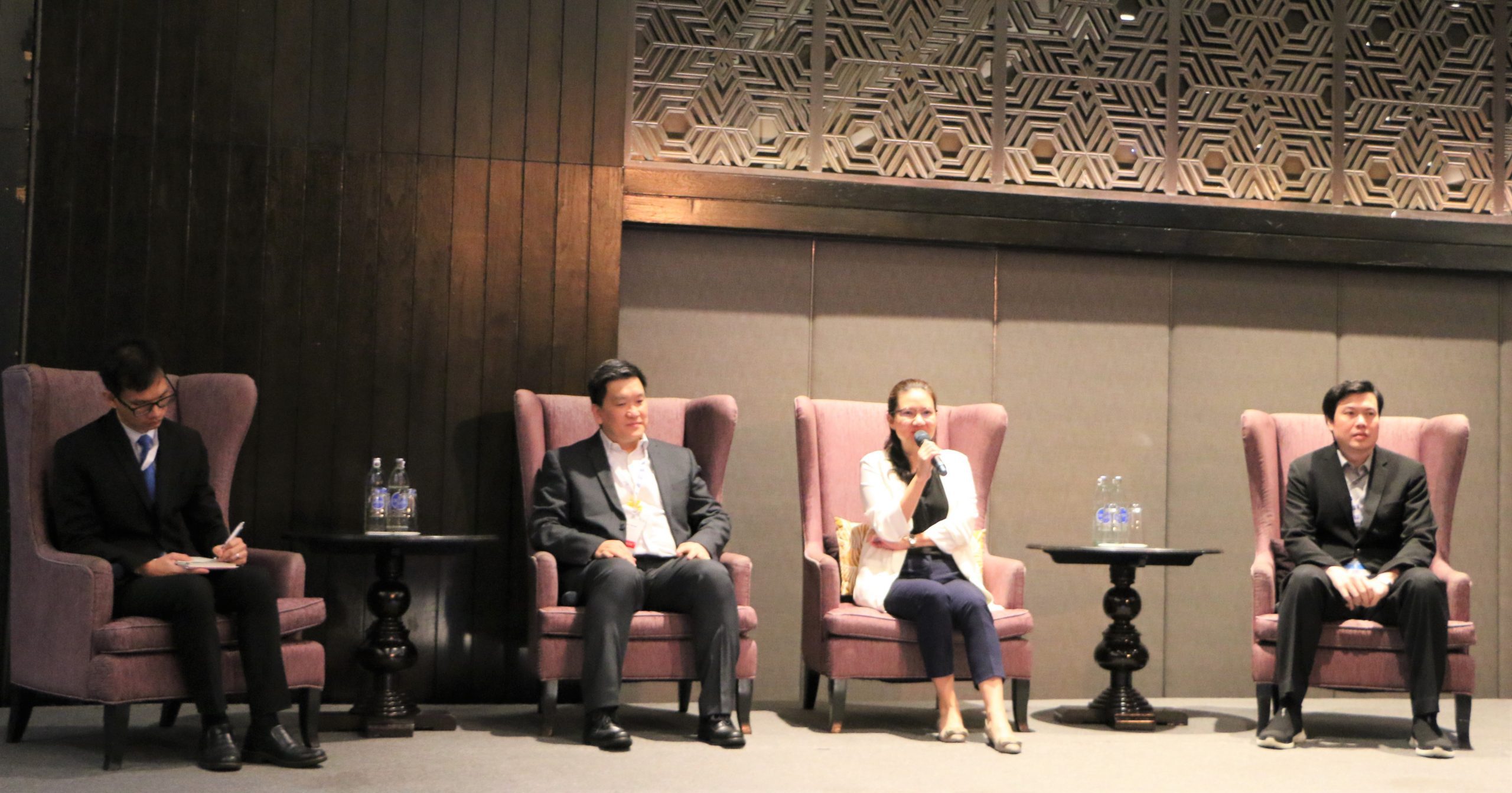
Organisations are under increasing pressure to innovate rapidly and on a scale. As result, data and analytics are being utilised to develop radically new business models and challenge existing industrial structures.
Dr Tiranee Achalakul, Director of Government Big Data Institute, Digital Economy Promotion Agency thinks that it will be difficult to use Big Data for a product, service and process innovation if data stays siloed by department, system, or channel.
A Modern Data Management Platform advances organisations beyond swamps of disparate data sources and disjointed business processes to a unified platform for data convergence and collaborative curation.
Dr Asis Unyapoth, Executive Vice President of the Digital Government Development Agency added that this helps break down departmental data and communication barriers and encourages all types of innovation, whether gradual, radical or disruptive.
Empowering teams through decision-making is an excellent method for fostering innovation inside a business. When employees are self-assured, they are more likely to undertake novel, creative tasks.
Customer input is an excellent approach to identifying patterns, common requirements, and holes in the offerings, even if it does not directly spark the next big idea. Spend time examining consumer feedback, whether by reading surveys, listening to phone conversations, examining customer recommendations or perusing reviews.
Hence, Dr Chalee Vorakulpipat, Head of Information Security Research at the National Electronic and Computer Technology Centre is convinced that new ideas may materialise as they examine unique configurations of technology, people and values through a material exploration process, seeking to figure out the implications of new technology designs.
Steven Seow, Business Value Advisor, Splunk highlighted that innovation does not occur overnight, nor does it typically occur on a shoestring budget. Setting aside the necessary time, people, resources, and tools will assist in preparing teams for success and reduce burnout, stress, and worry.
Innovation can only flourish when organisations can pull back from norms, habits, and comforts to view the bigger picture. It can be tempting to rely on tried-and-true methods but doing so can inhibit an organisation’s efforts to find truly new solutions.
Understand that mistakes are acceptable. Utilise errors to learn and develop. It is hard to predict the outcome of a brand-new endeavour without attempting it. Promote innovation and urge teammates to think big and outside of the box.
Data Analytics @ Cities and Transportation: Focus on the Implementation of Practical Ways to Unlock the Value of Data and Increase Efficiencies of Transportation

Yau Wai Yeong, Segment Marketing Manager, Smart Cities & Transportation Road Infrastructure, Intel Corporation knows that data is an asset that can be used to produce value for various stakeholders. “Organisation must, however, invest in assets to make them fit for use and must determine whether assets are worth investing in at any given time.”
Analytic processes make raw data relevant throughout the data lifecycle by transforming those attributes into intelligence with context and a business purpose. Analytics and decision-ready data inform corporate actions.
When those operations save or create money for an organisation, they have ultimately unlocked the business value of the data.
Because data value is defined in terms of business impact, quantifying an organisation’s data value begins with its data strategy.
Data can be used to cut expenses, improve revenues, or generate cash for businesses. In any case, evaluating the return on investment is the best technique to determine the net value of the data. Data capture, movement, preparation, and storage are not free. Thus, to calculate the RoI on data, the organisation must first assess its costs and benefits.
Governments may obtain insights by unlocking the value of data, allowing them to make better and faster decisions. The public sector must make sense of the massive amounts of data they receive daily to make vital choices that affect millions of people.
Navigating and then validating the veracity of this volume of data can be difficult. Inaccuracy can have disastrous consequences. However, these issues can be addressed by deploying big data platforms.
Administrations can make up ground by updating their online services, web presence and communications strategies. These investments will establish seamless digital services that will help them reach, inform and engage citizens more effectively.
Accessibility is the first step in modernising digital services. Proactive communication tactics enhance the citizen experience as well. Governments that actively respond to their constituents eventually create effective techniques for long-term engagement with them.
Accelerating the Path to a Data-Driven Government

Chris Day, Director of Sales Engineering for the Asia Pacific at Denodo, says that if the data landscape is very spread out and many solutions for integrating data use point-to-point approaches, this will lead to complexity, higher costs, and a lack of central control or governance.
He believes that in the next phase of data, which he called “the age of machines,” there will be even more sources of data, and all these devices will produce huge amounts of data.
The challenge for business users is finding the right data for their business needs. The data ecosystem is getting harder to navigate, especially as the number of data sources grows. Given the fact that business user is often given the task of finding or integrating data.
IT is having trouble keeping up with how much data the business needs and has become a bottleneck. Once the logical data delivery layer is in place, organisations can see all their data assets, which means the data is no longer stuck in silos.
Chris feels that users should not have to worry about how complicated or technical it is to connect data, because that is all taken care of in the logical layer. “Tool Agnostic means that any application that wants to use the data can do so in the same way and get the same results.”
On the other hand, providing a data catalogue – a data marketplace for data discovery will let people search for, find, and look through data sets.
When the Logical Layer and the Data Catalogue are put together, the organisation can make a Data Marketplace that will make the data ecosystem easier to understand, encourage re-use, and build trust in data.
“We have a lot of great resources on our website, but the best way to learn about data virtualisation is to start using it. With a free 30-day trial of Denodo Platform for AWS, Azure, or Google Cloud Platform, you can give it a try,” Chris offers the delegates.
The Test Drive gives organisations a private sandbox environment with a solution already set up that shows how data virtualisation makes multiple use cases more agile and flexible. Using a step-by-step guide, that organisation will learn in less than an hour how to quickly use multiple data sources, no matter where they are or what format they are in, with no duplication.
POWER TALK: Strengthening Digital Transformation and Fostering a Resilient, Inclusive, and Innovative Economy: Embracing the Digital-first Future
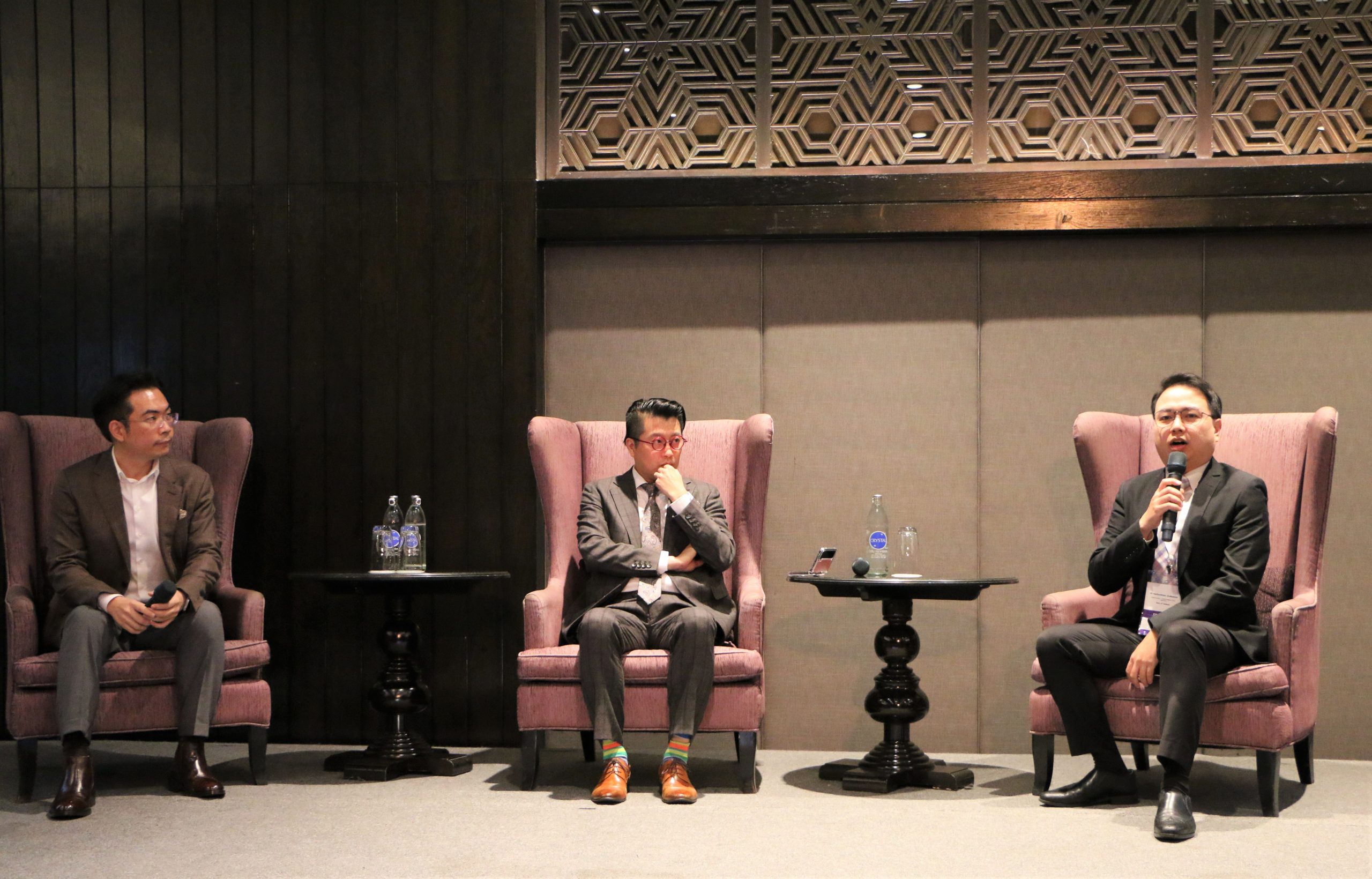
Since technology adoption is one of any organisation’s top goals, staff may feel overburdened with the need to become knowledgeable about new software adoption strategies. Organisations must find a way to help personnel adapt to these technological developments since they cannot afford to ignore this process.
Dr Pun-Arj Chairatana, Executive Director of the National Innovation Agency explains that various digital solutions are required to foster faster, more resilient and more equitable growth across a range of industries, including government, education, and financial services.
Governments may use the data that is continuously collected from citizens and devices to better service design and tailor delivery by utilising advanced analytics. “By deploying chatbots to conduct transactions on official government websites, AI is already able to assist the public.”
Reducing commuters’ travel times by streamlining transportation operators’ routes, supporting students’ academic needs based on their unique learning styles and enabling online self-referral and screening, all direct citizens to services based on their needs and eligibility and can help improve urban planning.
“Blockchain technology can be used to trace where the money goes in the system, from the finance ministry to the spending department to the delivery agency, for instance,” opined Dr Vacharakoon Jivakanont, Deputy Director – Payment Systems Policy Department, Bank of Thailand. “Governments can make better decisions about how to distribute public resources if spending is more transparent.”
Athikom Kanchanavibhu, Vice President, Business Transformation, Zuellig Pharma Thailand emphasised the benefits of robotic process automation (RPA) including improved speed and efficiency, the flexibility to handle demand spikes or backlogs and a decrease in human error.
Some governments currently automate routine business processes utilising a virtual workforce to reduce the stress of high-volume, repetitive jobs and free up time and resources that can be used to focus on front-line services.
Through smarter resource management and the linking of funding for programmes and services to the results, they deliver for citizens, digital technologies open chances to investigate new service delivery models and promote accountability and trust.
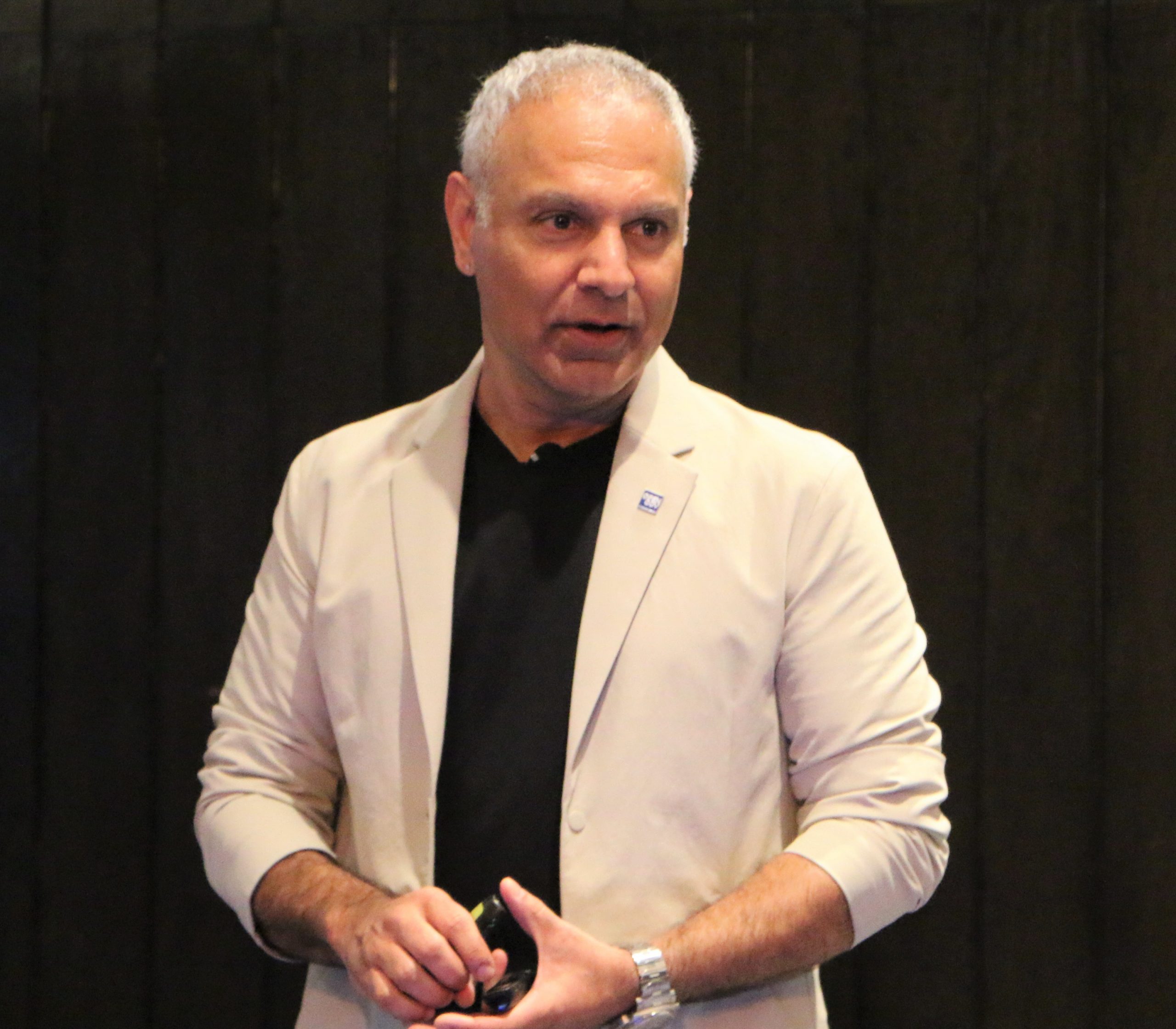
Thailand’s aspiration to lead ASEAN in digital innovation. To achieve this goal, the nation must concentrate on digital transformation and strengthen the digital economy. If these were to be effective, Thailand’s economy would grow, social welfare would increase and sustainable development would be possible.
CLOSING REMARKS
Even though a machine can usually do a given task faster and better than a person, it lacks the creativity and ability to meet the needs of each person that are unique to humans. So, technology is useless without people using it.
Mohit acknowledges that numerous organisational decision-making beliefs and methods have been destroyed by the crisis. In a highly unpredictable situation, organisations have to develop a robust action structure for the restart.
The fastest and most efficient way is to work with experts and companies that have the know-how and in-depth experience to guide agencies on their transformation journeys.
Digital and strategic partnerships are advantageous for both the client and the organisation. The way they conduct business is evolving, and new opportunities for creative collaboration are arising, Mohit asserts. A digital partner can be a pillar of strength when it comes to dealing with digital transformation processes.
“Partnerships will help organisations, especially in the government sector, do things in a much bigger and more complex way because they have the knowledge and experience to do so; and could keep organisations from making mistakes that could have been avoided, which saves time and money,” he concludes.
















